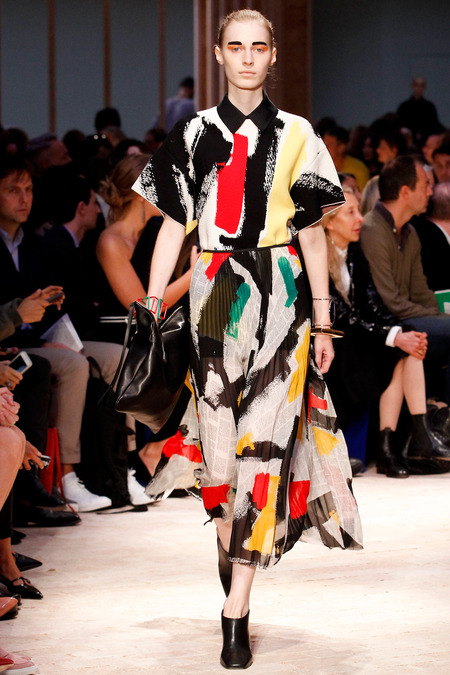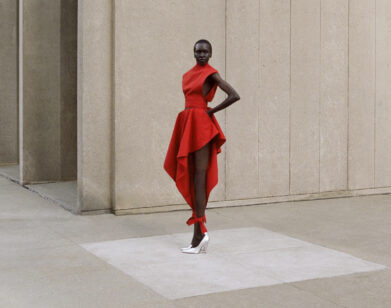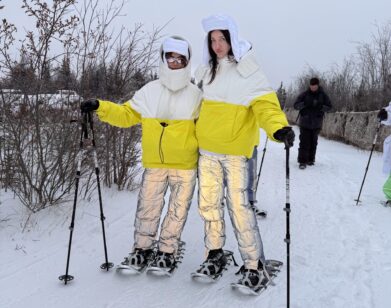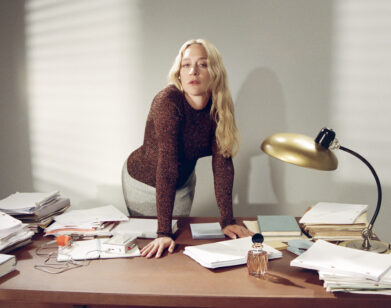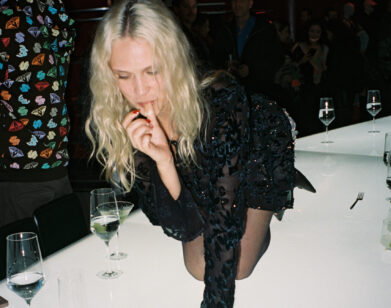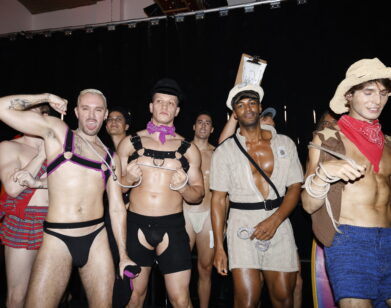In Paris, a Crash of Arts and Crafts
The final days of Paris Fashion Week are the deciding and seminal moments of the global calendar. The account books fly open, orders are written, and the commanding creative and institutional presence of the French grandes maisons is supremely felt. Amongst the propositions of houses like Givenchy and Valentino for the Spring ’14 season has been a mounting wave of craftsmanship, with the haute couture and ready-to-wear divide becoming at times a questionable one. Elsewhere (like at both Céline and Chanel), the idea of arts and craft was interpreted with a little more playful pizzazz.
Phoebe Philo’s Céline collections have been the unequivocal signposts along the minimalist route we’ve been charting for the past several seasons, so it’s exciting to see her leave her diluted copycats behind in the dust with a season bursting with vivid color, print, and industrial-strength details. Philo was looking at the Hungarian photographer Brassaï’s iconic series of graffiti and wall carving photographs, an oeuvre he called “the language of the wall,” and after this latest chapter in her time at Céline, we wouldn’t hesitate to name her as a first-rate linguist in “the language of the clothes.” Playing brushstrokes of cobalt, emerald, vermillion, and sunshine yellow across poplin, sunray pleating, knitted silk, and inverted jacquard, her optimistic summer was splashed with more than a whiff of ’80s Memphis design references, from the color palette right down to the cubist enamel bracelets and cage-heel pumps. Brass rings were slung around the waist and embedded in jackets as abstract portholes through which deeper layers shifted and flashed. The sheer breadth of fabric research and form play in this collection was astounding, twisting any reference to classical archetypes upside down.
Another designer breaking his own mold was Riccardo Tisci, who decorated the circular Givenchy runway with a pile-up of smoking black Beamers, Mercs, and Jags in a crash symbolic of the cultural collide in his Spring show. Looking simultaneously to African and Japanese dress, Tisci returned to the gothic glamour with which he started at the label, eschewing the sportswear shapes that had of late inflicted the collection with a heavy, urban vibe. Instead, he found his street savvy with flat Perspex sandals that altered the stride of his crystal-faced models, who walked to the beat of live conga drums in the season’s kimono tailoring and plisse goddess gowns. A series of picture capes broke the monotony of draped jersey and tuxedo pajamas, making way for a textural play of feathered aprons and sequined pleats harnessed at the neck in sunset shades. As Joan Smalls closed the show in a satin tuxedo that fell away in a shower of pleats, Kim and Kanye watched on, proud witnesses to their master’s dark arts.
Treading into more exotic territories, too, were Maria Grazia Chiuri and Pierpaolo Piccioli, whose Valentino shows have become a romantic institution in Paris, all sweetness and gossamer light. They injected a global mythology into their Spring offering that deepened and darkened their vision somewhat, reaching farther afield than the classical, European references that have informed them previously. It was why the fringed black cape that opened the show was hard to place—its turquoise and floral geometries hinting at the Aztecs or the Mayans, perhaps. The pair claimed opera as an influence, which could explain the heated, stage-worthy palette—primary-colored mosaic lace and embroideries that borrowed from myriad religious iconographies. The accessories, however, pulsed with pagan imagery, from scarab-studded sandals to golden pendants hung with the signs of the zodiac—lost somewhat amongst the dazzling tapestry gowns, they shone beautifully against the collection’s flawless kaftans and columns in satin or suede.
Hedi Slimane conjured another urgent, jolting show for Saint Laurent that, like Céline, referenced bits of the ’80s—different bits, we can assure you. Fitting out the venue with a pivoting LED lightshow, he sent out an army of bobby-socked and booted wastrels in off-the-shoulder party frocks that flounced and bounced in black leather or crystal studded flames, gold lamé, and Yves’ 1971 lips print. It’s the first time in his tenure at the house (that’s three womenswear shows, for those keeping count) that Slimane’s nod to the archives has been so evident, with jewel-colored silk dresses, cocooning boleros, and a sharp tuxedo jumpsuit threaded into the mix. That all of the above were severely abbreviated and set to a rock soundtrack by Brooklyn band Liars could perhaps seem blasphemous. But Yves, too, was pushing the envelope in his day, and Hedi’s effort, however literal, is assuredly in a league of its own.
Elsewhere, calls of blasphemy, heresy, and the like may be directed at Karl Lagerfeld, whose Chanel Art show for Spring ’14 was a thrilling parody of the contemporary art world and its whirlwind of glamorous fairs and monumental exhibitions. Karl sketched and commissioned a total of 75 larger-than-life sculptures, paintings, statues, and installations that dotted his catwalk, with each work circling back to the house’s signatures: from the double C’s to the 2.55 chain, the N°5 bottle, and the camellia, Chanel’s floral emblem. With not-so-subtle nods to many of the biggest names in the game—Yves Klein, Anselm Keifer, Jeff Koons, Ai Wei Wei—the references were abundant and scintillating, inspiring more post-show banter perhaps than the collection itself. Funnily enough, that was about art, too—however, the scope of such a statement can only be felt when one considers the many and varied women within such an industry. There’s the art student, her teacher, perhaps the critic and collector. Karl thought of them all in this 89-look extravaganza, which ranged from shocking pink, shredded tweed shifts through to a series of white asymmetric gowns decorated in a rainbow of colorwheel swatches. Giant pearl headphones and graffiti backpacks (undoubtedly instant cult items) delved into ironic art-school territory, while flat shifts fell in squared aprons mimicking canvases dusted in charcoal. With this show, Karl gave much more than the expected cinema—he gave us his politics and his passion, in Technicolor, no less.

